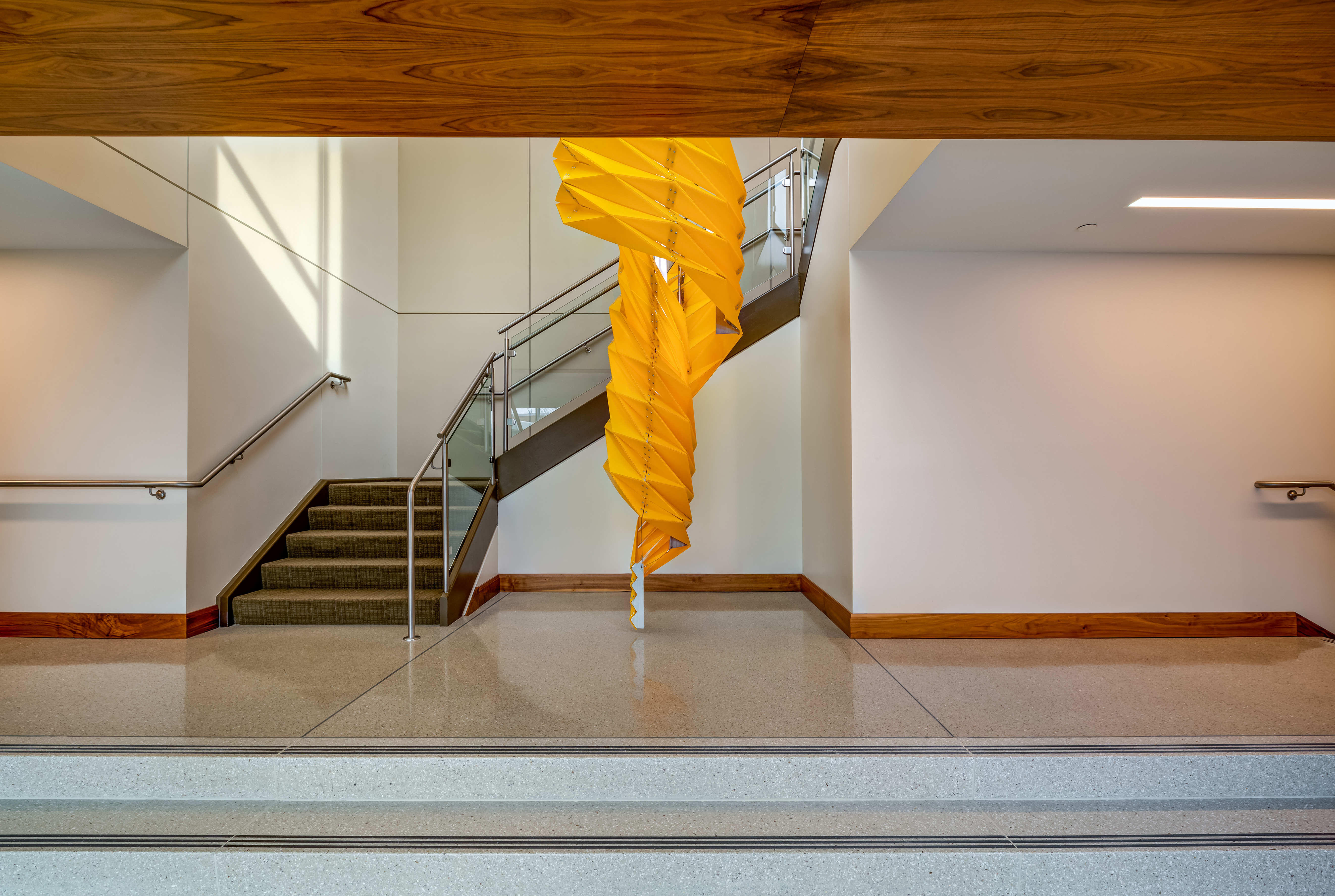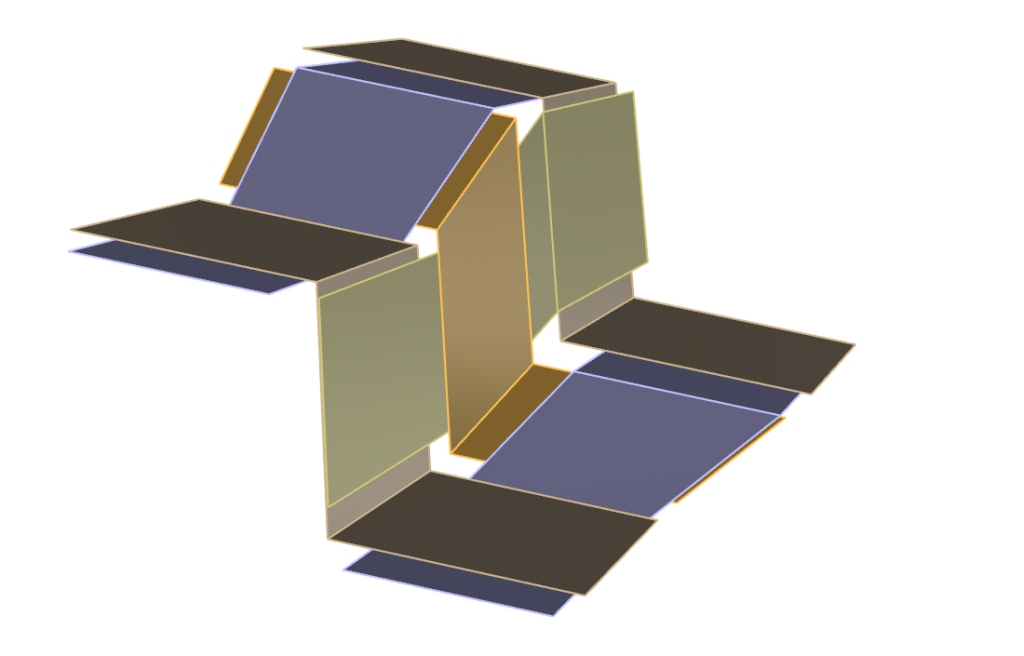
Ruga Ribbons is a 14 feet tall permanent sculpture commissioned by Rowland Design for Liberty Fund library that is located in Indianapolis. “Ruga” is the Latin word for making winkles, creases, pleats, and folds. Inspired by the use of winkling and folding in the material as a primary genesis of artistic forms, Ruga Ribbons is a digitally-precise form created from flat sheets of corrugated plastic material that mimics fabric-like ribbons. Suspended in the void of the main stairwell, Ruga Ribbons creates an ever-changing visual experience for people who come to interact with it as they move up and down the staircase.

The building architecture and art displayed in the building, which was designed by Rowland Design, provided the initial inspiration for Folded Light Art’s use of abstract geometry. Folded Light Art then worked with Ignition Art, a fabricator and installer, on solving issues associated with unrolling a couple of hundred unique panels for digital cutting and assembly. These unique panels were then connected in order to create the two ribbons that are intertwined with one another.

See the above for a stop-motion movie, showing the installation-in-progress a wonderful crew from Ignition Arts, a designer/fabricator based in Indianapolis.




